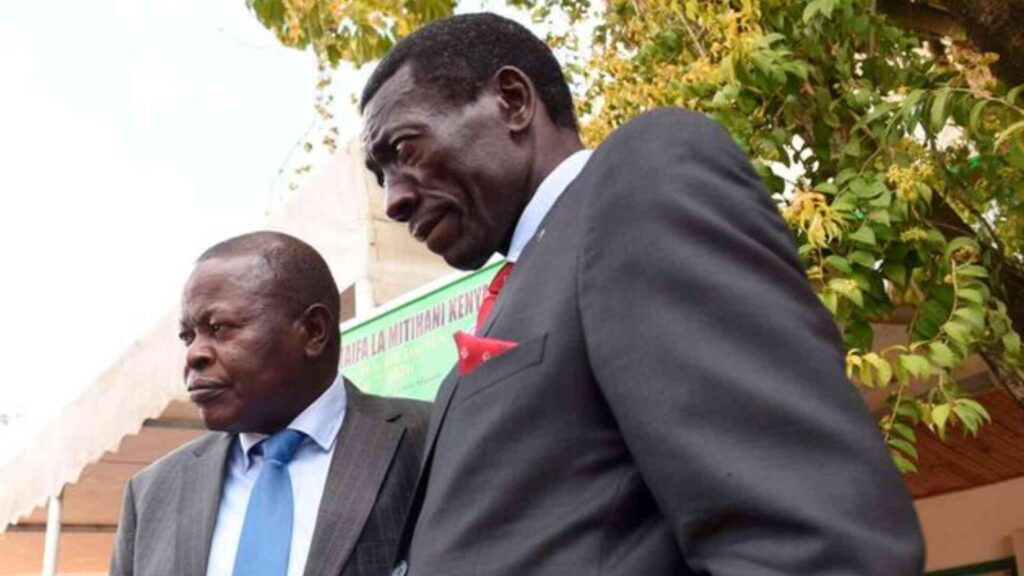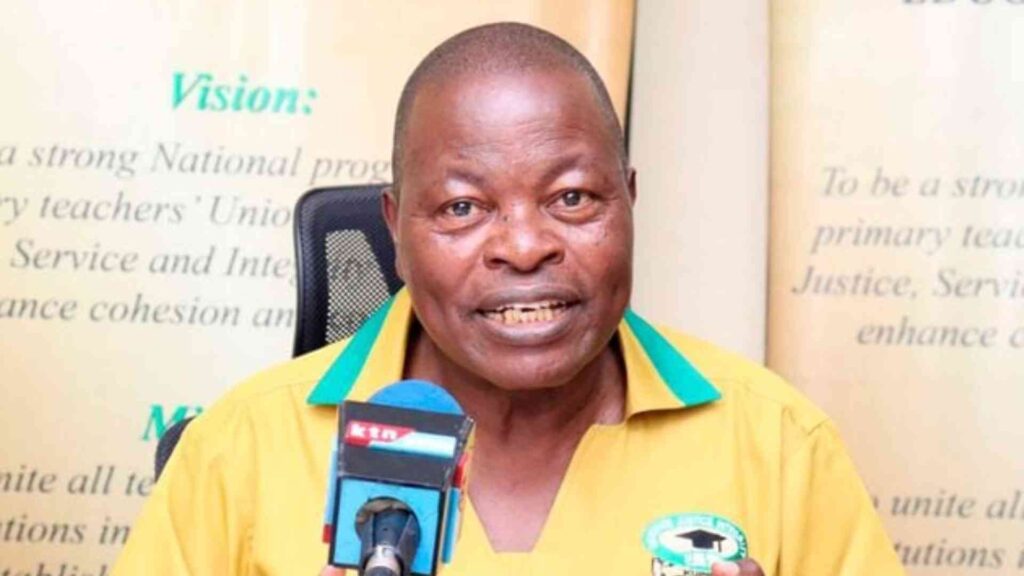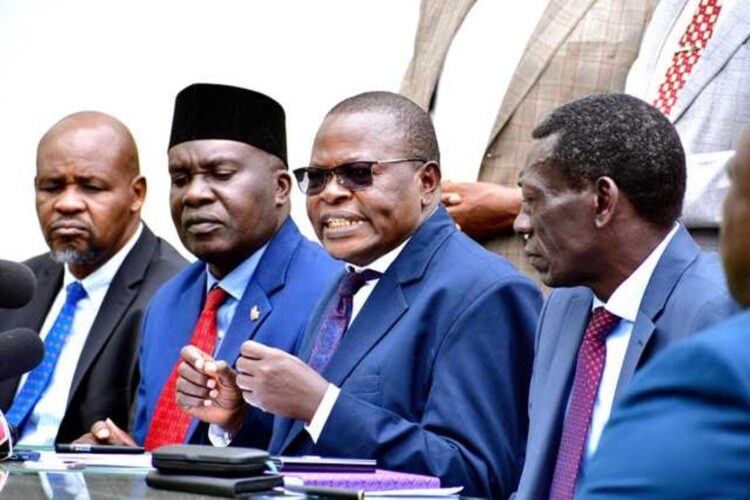Kenyan Teachers Hit Back at Revised Hardship Allowance Plan.
A conflict is escalating between Kenyan teachers and the government as plans to implement a revised hardship allowance policy take shape. The move, which could strip thousands of teachers of their allowances, has stirred outrage within the teaching community. Educators fear the new changes will demoralise them, directly impacting their performance and overall morale.
The Kenya Teachers in Hardship and Arid Areas Welfare Association (KETHAWA) has taken a firm stand against the changes, accusing the government of perpetuating neglect toward teachers in remote and difficult regions. The association maintains that the policy shift endangers the welfare of teachers who have long worked under adverse conditions marked by insecurity, inadequate infrastructure, and social isolation.
Teachers’ unions have also opposed plan to reclassify gazetted hardship areas, warning that the decision could strip thousands of teachers of vital allowances. The Kenya National Union of Teachers (Knut) and the Kenya Union of Special Needs Education Teachers (KUSNET) accused the government of failing to consult stakeholders, calling the move disruptive and insensitive.
The unions criticised the lack of official communication, stating that teachers had learned about the changes through media coverage. They said such a move, without proper consultation, could negatively impact the education sector. Knut Secretary-General Collins Oyuu explained that the abrupt nature of the announcement was dangerous, noting that employees needed ample time to prepare if hardship status was to be removed from an area.
Government’s Plan to Cut Costs
Prime Cabinet Secretary Musalia Mudavadi recently revealed that the government plans to implement a 2019 report to rationalise hardship zones. The goal is to reduce annual public service hardship allowance payments from Sh25 billion to Sh19 billion, saving the exchequer Sh6 billion. This reclassification is meant to promote fairness across public sectors and harmonise the criteria for hardship areas.
Speaking in Parliament, Mr Mudavadi explained that a multi-agency technical committee had been formed to address disparities among the 16 hardship areas designated by the civil service, county governments, and State corporations, compared to the 44 listed by the Teachers Service Commission (TSC). The Judicial Service Commission currently lists 21 hardship zones.

The classification process, he added, was based on extensive field visits, socio-economic data, county statistics, and input from bodies like the Kenya National Bureau of Statistics (KNBS) and the Commission on Revenue Allocation (CRA). He noted that parameters such as poverty index, climate, security, terrain, food, water, and access to social and communication services had been used.
Teachers’ Voices and Union Resistance
Unions have voiced strong objections to the move, warning of a possible backlash from teachers. KUSNET Secretary-General James Torome said that any changes to allowances for unionised members must be negotiated through the Collective Bargaining Agreement (CBA), signed between the union and the TSC.
He pointed out that CBAs are legally binding and cannot be changed unilaterally.
Torome warned that bypassing the unions in such matters would provoke street protests from teachers. He also cited Article 41 of the Constitution, which guarantees fair labour practices, as a foundation for resisting the move. He added that the union had proposed an increase in hardship allowance in the 2025–2029 CBA, which is pending negotiation.
KNUT Sec Gen Collins Oyuu echoed similar sentiments, stating that most teachers depend on hardship allowances to service their loans. He stressed that removing these payments, especially under the current economic strain, would be inhumane.
“If this allowance is what was cushioning them, then removing it is very inhuman,” he said. Knut had already convened an internal committee to deliberate on the issue, even though no official communication had been received.
KETHAWA’s National Secretary, Wangonya Wangenye, said educators in marginalised areas had been overlooked in the reclassification process. He argued that, rather than slashing the allowance, the government should have increased it and based it on 40 percent of a teacher’s basic salary to reflect the realities on the ground. According to him, the current rates are outdated and do not account for the high cost of living in hardship zones.
Moses Nthurima, the Deputy Secretary-General of the Kenya Union of Post Primary Education Teachers (Kuppet), expressed similar sentiments, declaring that the government’s approach still fell short of fairly compensating educators stationed in high-risk, poorly equipped locations. He stressed that teachers’ unions must be included in any future review of hardship areas, warning that discrimination dating back many years was being reinforced.
One teacher in Tharaka Nithi remarked that the new policy was a betrayal, noting how educators in such areas risked their lives daily. Another from Bunyala expressed concern that the government had ignored the real challenges still present in these regions.
Negative Impacts on Staffing and Morale
The unions warned that removing hardship allowances could worsen teacher shortages in already understaffed regions. These areas, typically remote and underdeveloped, depend on such incentives to attract and retain qualified staff. The potential withdrawal of these allowances, they argued, would demoralise teachers and likely lead to higher attrition rates.

In a direct address to Parliament, Mudavadi maintained that the review was overdue and necessary to ensure fairness in public service compensation.
“To promote fairness, equity and parity among employees, the government did constitute an interagency technical committee,” he said.
The report has already been submitted to the Head of Public Service for gazettement, pending Cabinet approval.
Set to be rolled out in July, the revised policy introduces a two-tier system, classifying hardship areas as either “Extreme” or “Moderate.”
This overhaul excludes several regions that were previously eligible, leaving teachers in areas such as Tinderet, Soin, Bunyala, Elgeyo Marakwet, and Tharaka Nithi at risk of losing their hardship stipends.
Currently, hardship allowances vary from Sh6,600 for teachers in Grade B5 to Sh38,100 for those in Grade D5, depending on job group.
The classification inconsistency has long sparked confusion, with the Teachers Service Commission (TSC) using educational zones, while the civil service relies on former district boundaries.
The TSC recognises 44 hardship areas, whereas the civil service acknowledges only 16, and the judiciary lists 21.
Read Also: Ministry of Education Sets Six-Month Deadline for School Land Title Deeds
The new categorisation places counties such as Mandera, Garissa, Turkana, Wajir, Tana River, Marsabit, West Pokot, Isiolo, and parts of Baringo and Lamu under the “Extreme” category. Regions such as Narok, Samburu, Suba, Kitui, Makueni, Kajiado, Kilifi, Laikipia, Nyandarua, and parts of Kisumu (Nyando and Nyakach constituencies) fall under the “Moderate” tier.
Despite the government’s rationale, many educators maintain that hardship conditions persist. Teachers argue that insecurity, poor roads, and lack of basic services still prevail, justifying continued compensation. Meanwhile, Members of Parliament have voiced outrage over what they describe as a lack of fairness and clarity in the reclassification process. They have called for greater transparency and more inclusive decision-making going forward.
Kenyan Teachers Hit Back at Revised Hardship Allowance Plan.



Discussion about this post